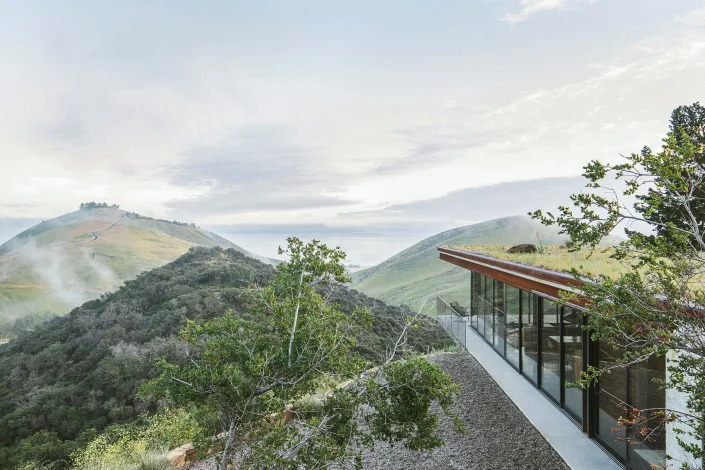USA Today
Off-grid living beckons more than just hardy pioneer types. Here’s why it’s taking off.
Katherine Roth – June 12, 2022

Living off-grid conjures images of survivalists in remote places and a rustic, “Little House on the Prairie” lifestyle with chores from morning to night.
Yet only a tiny fraction of people living off-grid do it like that, and fewer still live more than an hour from any town.
“Living off-grid doesn’t mean you don’t buy your groceries at a store or take your waste to the local dump,” says Gary Collins, who has lived off-grid, or mostly off-grid, for a decade. “It just means you are not connected to utility grids.”
He has published books on the subject, and leads online classes.
Although precise numbers of off-grid households are hard to come by, Collins estimates that only 1% of those living off-grid are in truly remote areas. Overall, the off-grid movement remains small. But it got a boost after the COVID-19 pandemic hit: City dwellers began to explore different ways of living.
Off-grid living unique to each person
More-frequent power outages, utility grids’ struggles and price hikes to handle the severe weather events brought on by climate change have added to interest.

There are also those who remain connected to the grid but try to power their homes independent of it. Author Sheri Koones, whose books about sustainable houses include “Prefabulous and Almost Off the Grid,” cites the rise in “net metering,” when your property’s renewable energy source – usually solar – is producing more energy than you use, and your local utility pays you for the excess.
Today, off-grid living encompasses everything from “dry camping” in RVs (with no electrical or water hookups) to swank Santa Barbara estates, from modest dwellings tucked just outside of towns to – yes – remote rustic cabins.

“Everyone does it differently and everyone does it their own way, because it’s their own adventure,” Collins says.
Elegant designs for a modern feel
The Anacapa Architecture firm, in Santa Barbara, California, and Portland, Oregon, has built several upscale off-grid homes in recent years, and has several more off-grid projects in the works.
“There’s definitely an increase in traction for this kind of lifestyle, especially in the last two years,” says Jon Bang, marketing and PR coordinator for Anacapa Architecture. “There’s a desire to get more in tune with nature.”
The lifestyle that Anacapa homes aim for is one of modernist elegance, not roughing it. Bang says new technologies can ensure comfortable self-sufficiency.

Such homes also are carefully designed to take advantage of the site’s landscape features with an eye to sustainability. For example, one of the firm’s homes is built into a hillside and has a green roof.
For those without the means to hire architects, there are numerous recent books, blogs, YouTube videos and more dedicated to the subject.
“A lot of people are interested in it now,” Collins says. “They contact me after watching something on TV or on YouTube and I tell them, `If you learned everything you know on YouTube, you are never going to survive.'”
He makes regular grocery runs, but also grows some of his own food and hunts wild game. He has his own septic system and well. While his previous home was entirely off-grid, with solar panels and a wind turbine for power, his current home is hooked up to an electrical grid, mainly, he says, because the bills are too low to warrant the cost of solar panels.

What health and safety considerations factor into the off-grid lifestyle?
If you want to be totally self-sufficient, he says, it takes a lot of time and physical effort. You won’t have time to hold down a job. If you’re living in a remote location, you need to consider access to medical care, and whether you are mentally prepared for that much isolation.
“Your wood won’t cut itself. You’ll have to haul water,” he says, warning, “People die off-grid all the time, because of things like chain saw accidents. You have to be very careful and think everything through. No EMS will get to you in time.”
And depending on how it’s done, he says, off-grid living is not necessarily environmentally sustainable – not if you’re driving a fuel-guzzling truck and relying on a gas-powered generator, for example.
Still, improved alternative energy sources and construction techniques are making off-grid living more thinkable for more people, including those who don’t want to haul buckets of water from a well or live by candlelight.
Where did the off-grid movement begin?
Experimental architect Michael Reynolds pioneered the off-grid movement, which gained popularity in the early 1970s in Taos, New Mexico, according to the Taos Pueblo Tourism Department.
Reynolds designed off-the-grid homes called Earthships, according to Earthship Visitor Center, using sustainable building practices, including the usage of discarded steel and tin cans for the foundation of homes.





Iterations of these homes evolved over the next decade to incorporate passive solar and natural ventilation.
Reynolds’ legacy continues to be a presence in the region today through a fully off-the-grid community, using exclusively solar and wind power, northwest of Taos. The community sits on over 600 acres and includes more than 300 acres of shared land.
USA TODAY producer Camille Fine contributed.
